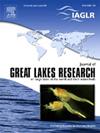Anthropogenic litter and plastics across size classes on a mechanically groomed Great Lakes urban beach
IF 2.4
3区 环境科学与生态学
Q3 ENVIRONMENTAL SCIENCES
引用次数: 0
Abstract
Anthropogenic litter and plastic pollution are well-recognized global and Great Lakes stressors, but the distribution of plastic pollution on shorelines is uneven. Beaches in urban areas are close to many potential sources of plastic pollution and often heavily visited, so are likely exposed to high litter inputs. Conversely, beach maintenance activities, including mechanical grooming, may lower litter concentrations. In the summer of 2021, surface litter and > 2 mm anthropogenic materials within the top 5 cm of beach sediment were repeatedly measured along 10 transects at Euclid Beach, in Cleveland, Ohio. Plastics comprised 79 % of litter > 50 mm and 100 % of smaller visible litter on the beach surface. Surface litter concentrations (0.279 pieces m−2) were relatively low compared to previously studied Great Lakes strandlines, with mechanical grooming and beach visitor usage influencing litter distribution. However, when plastics within the top 5 cm of the beach sediment were included, Euclid Beach microplastics (54.7 pieces m−2) and mesoplastics (45.0 pieces m−2) concentrations were among the highest in the Great Lakes. Plastic production pellets were the most common microplastic morphology, while foamed plastics were the most common mesoplastics. Most plastics in the sediment were too small to be removed by mechanical grooming, but fragmentation of larger, weathered plastics is a potential concern deserving further investigation. Overall, our results suggest that urban, mechanically-groomed beaches can have high plastics loads. Such beaches should be strategically included in larger scale studies of plastic pollution along shorelines, especially when considering issues of environmental justice.
在机械修整的五大湖城市海滩上,各种大小的人为垃圾和塑料
人为垃圾和塑料污染是公认的全球和五大湖的压力源,但塑料污染在海岸线上的分布是不均匀的。城市地区的海滩靠近许多潜在的塑料污染源,游客经常很多,因此很可能接触到大量的垃圾。相反,海滩维护活动,包括机械梳理,可能会降低垃圾浓度。在2021年夏季,地表垃圾和>;在俄亥俄州克利夫兰的欧几里德海滩,沿着10个样带反复测量了海滩沉积物顶部5厘米内2毫米的人为物质。塑料占垃圾总量的79%。50毫米和100%的海滩表面可见的小垃圾。与先前研究的五大湖海岸线相比,地表凋落物浓度(0.279片m−2)相对较低,机械梳理和海滩游客使用影响了凋落物分布。然而,当包括海滩沉积物顶部5厘米内的塑料时,欧几里得海滩的微塑料(54.7片m - 2)和中塑料(45.0片m - 2)浓度是五大湖中最高的。塑料生产颗粒是最常见的微塑料形态,而泡沫塑料是最常见的中塑料形态。沉积物中的大多数塑料都太小,无法通过机械梳理去除,但较大的风化塑料碎片是一个值得进一步研究的潜在问题。总的来说,我们的研究结果表明,城市中,机械整理的海滩可能有很高的塑料负荷。这些海滩应该战略性地纳入对海岸线塑料污染的更大规模研究,特别是在考虑环境正义问题时。
本文章由计算机程序翻译,如有差异,请以英文原文为准。
求助全文
约1分钟内获得全文
求助全文
来源期刊

Journal of Great Lakes Research
生物-海洋与淡水生物学
CiteScore
5.10
自引率
13.60%
发文量
178
审稿时长
6 months
期刊介绍:
Published six times per year, the Journal of Great Lakes Research is multidisciplinary in its coverage, publishing manuscripts on a wide range of theoretical and applied topics in the natural science fields of biology, chemistry, physics, geology, as well as social sciences of the large lakes of the world and their watersheds. Large lakes generally are considered as those lakes which have a mean surface area of >500 km2 (see Herdendorf, C.E. 1982. Large lakes of the world. J. Great Lakes Res. 8:379-412, for examples), although smaller lakes may be considered, especially if they are very deep. We also welcome contributions on saline lakes and research on estuarine waters where the results have application to large lakes.
 求助内容:
求助内容: 应助结果提醒方式:
应助结果提醒方式:


